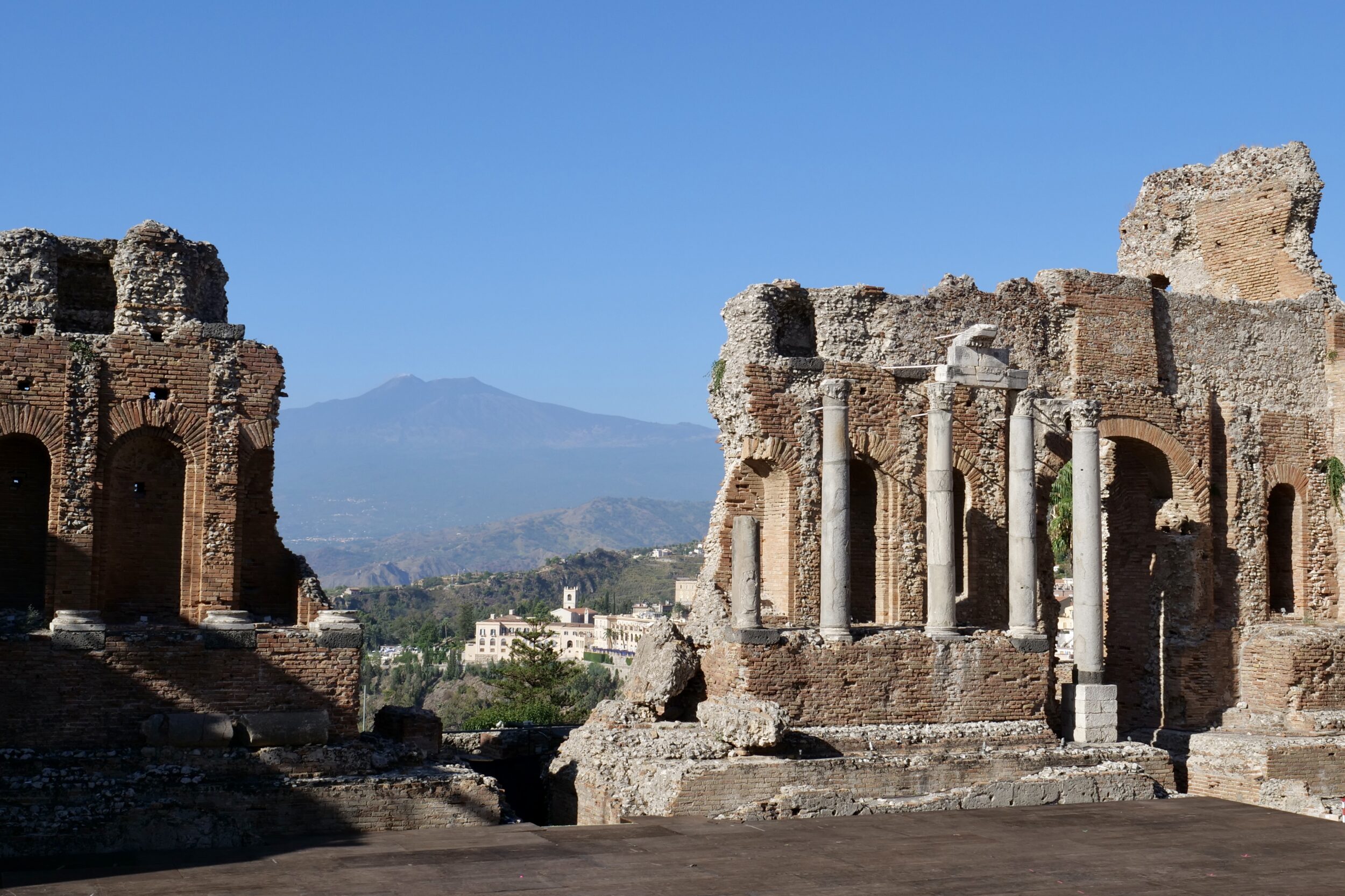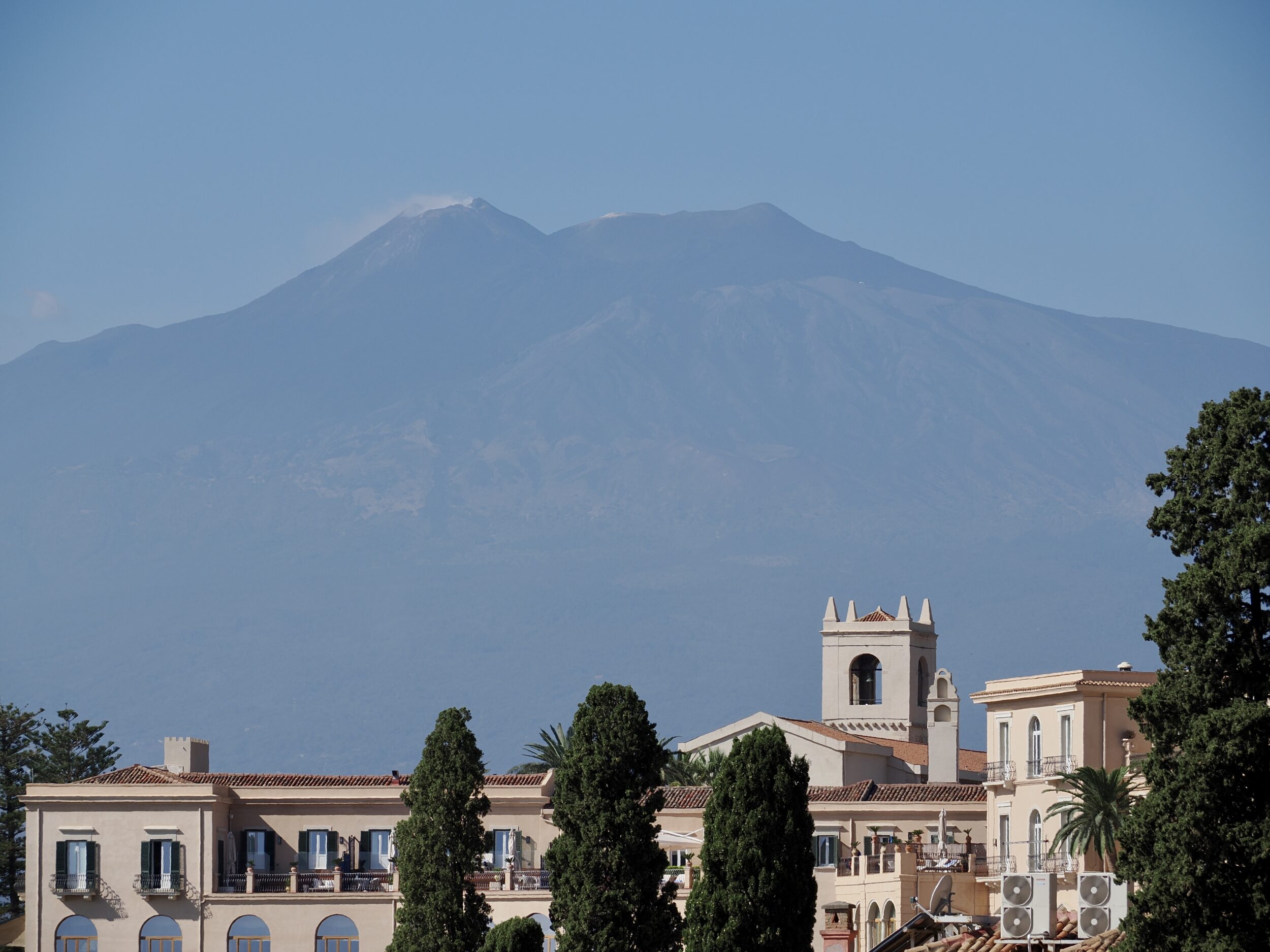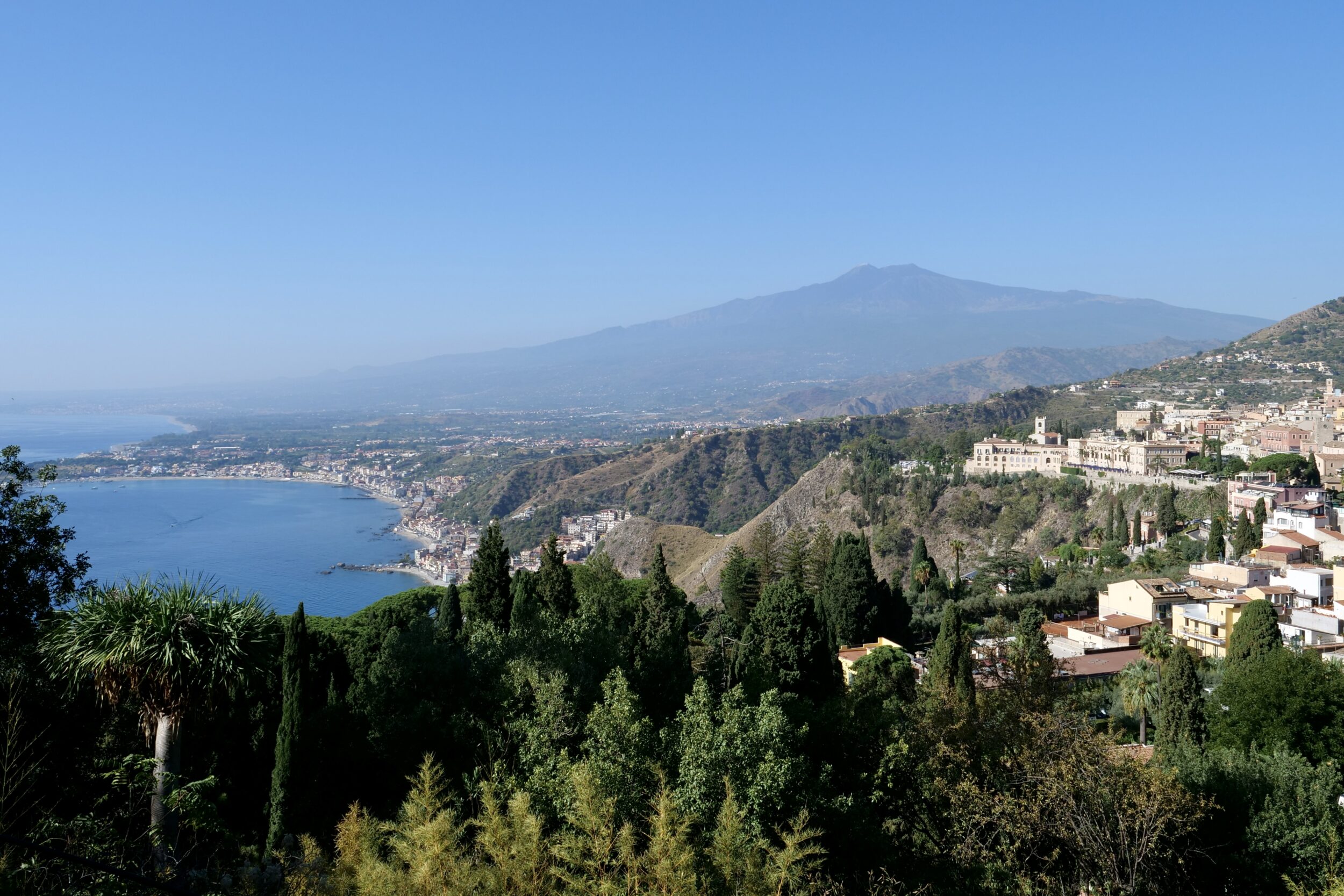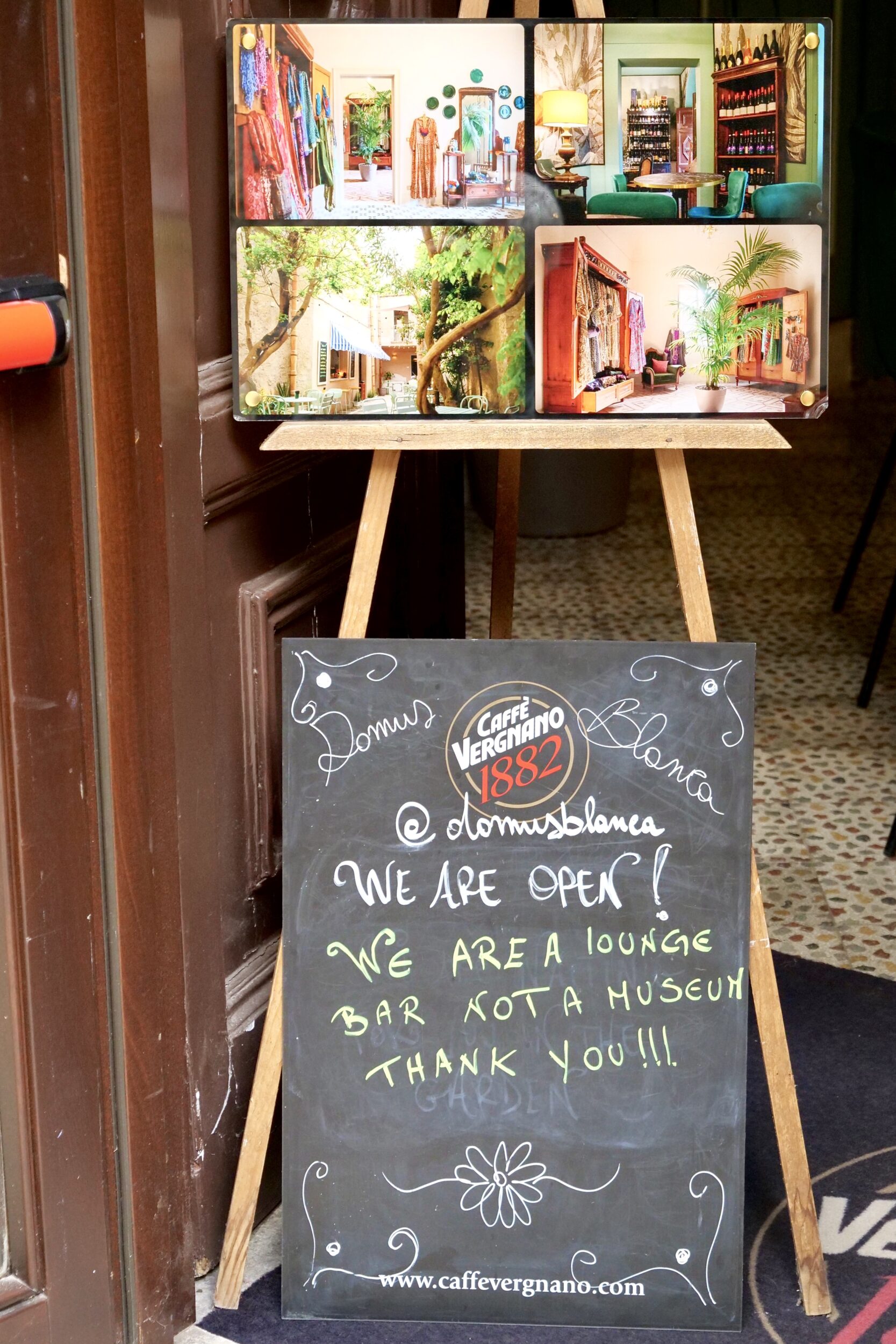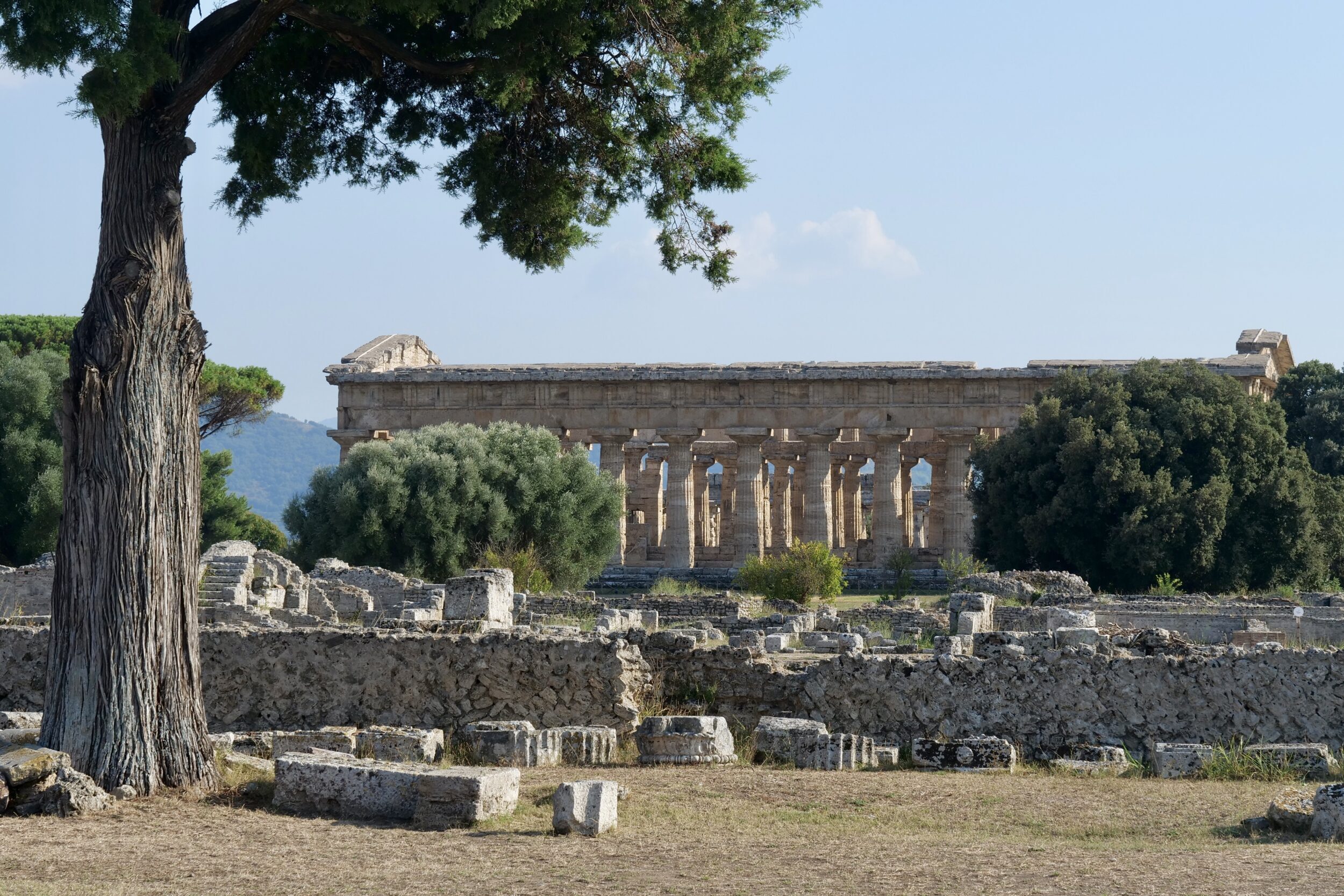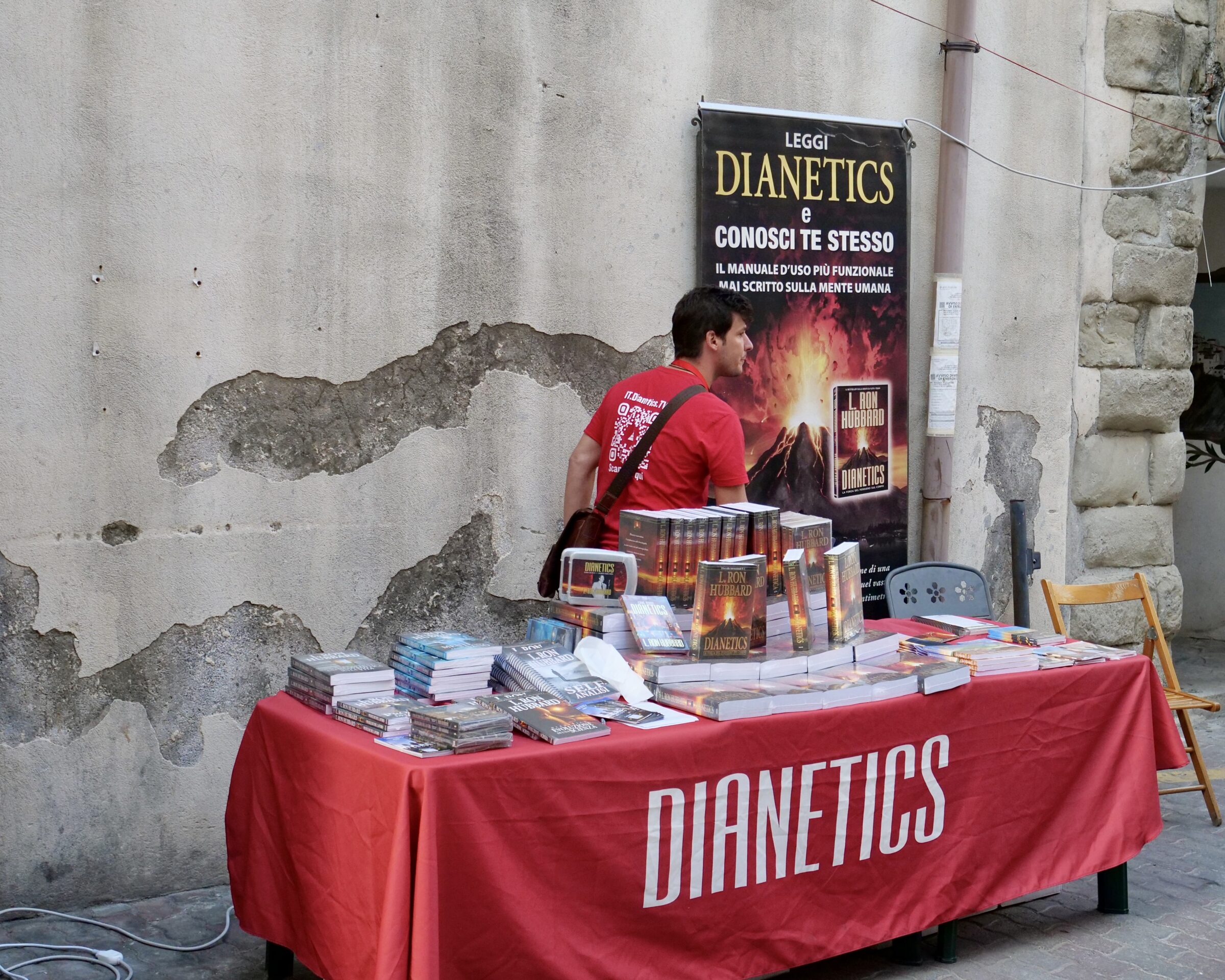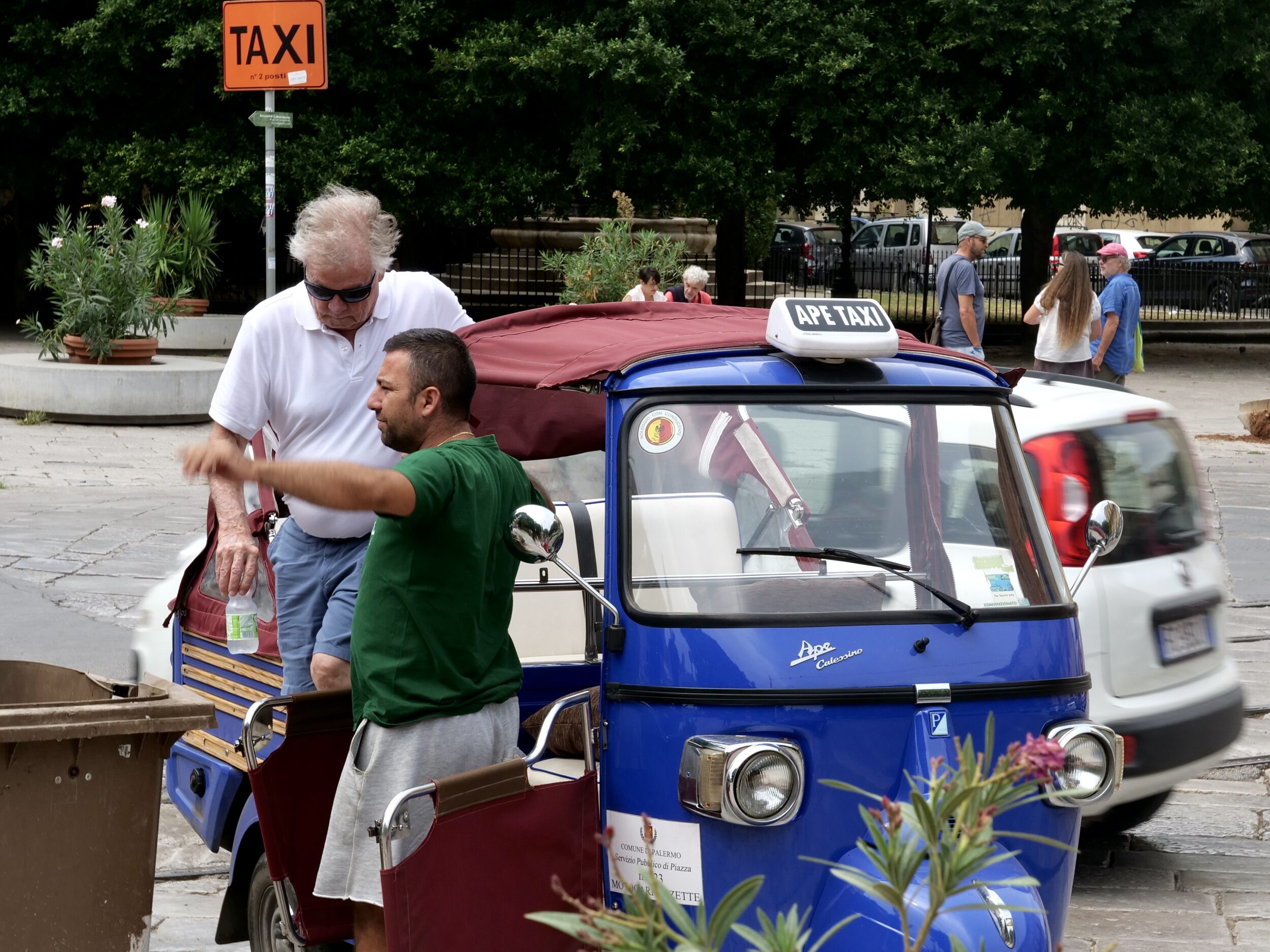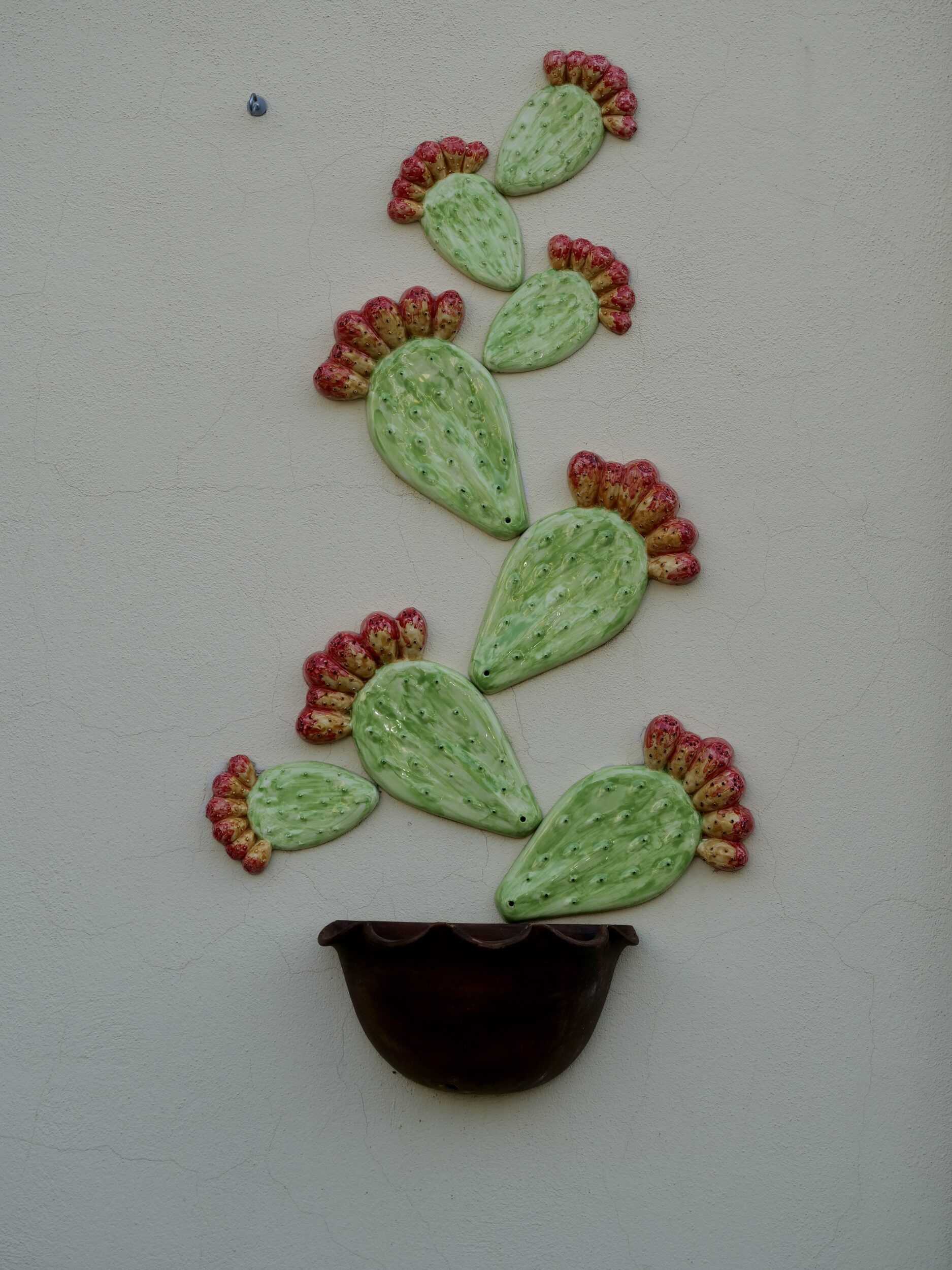#16 in this series celebrated a happy surprise; this episode documents a nasty one.
Italy has many attractive, spectacularly located, historically rich hilltop villages.
Sicily’s Motta Camastra is one such; it feels quite “remote”, but is in fact not far from Messina, and even closer to Taormina.
Taormina overlooks the Ionian Sea and is gorgeous…but hugely over-touristed/touristy, and chock with “luxe” boutiques et al. (all those aspects will be evident in future, multi-image posts)
Inland, and closer to Mt Etna, Motta Camastra is still resolutely real, rural.
It is noted for the excellence of its local produce, most especially nuts.
Our day trip coincided with its annual festa della noce, which proved good clean tasty fun.
The nut festival attracted many welcome/d visitors…plus one “toxic nut”/ conman.
